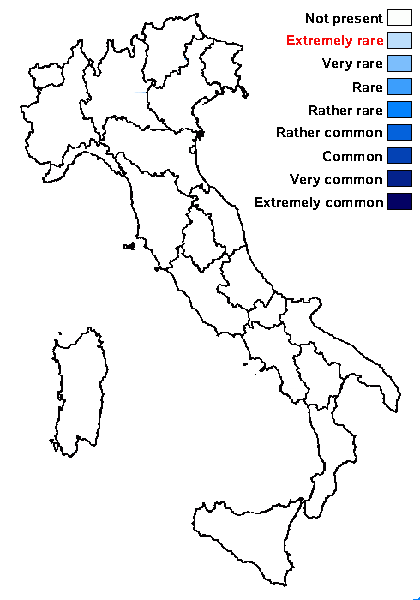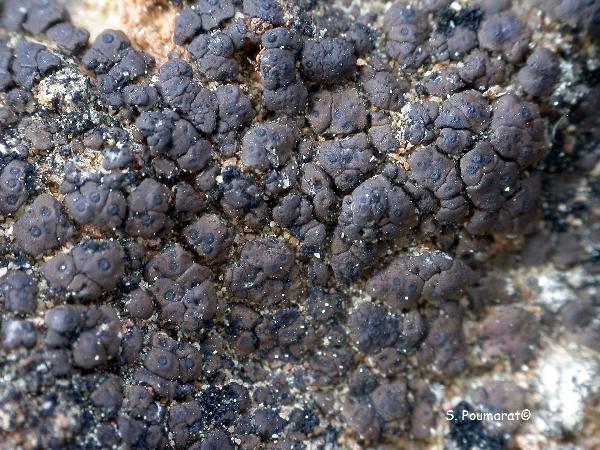Heteroplacidium phaeocarpoides (Nyl.) Breuss
Ann. naturhist. Mus. Wien, Ser. B, Bot. Zool., 98 (suppl.): 40, 1996. Basionym: Endocarpon phaeocarpoides Nyl. - Flora, 62: 358, 1879
Synonyms: Catapyrenium phaeocarpoides (Nyl.) Breuss; Dermatocarpon phaeocarpoides (Nyl.) Zahlbr.; Endopyrenium phaeocarpoides (Nyl.) Boistel
Distribution:
Description: Thallus squamulose, the squamules flat, very small, 0.5-1.5(-2) mm wide, 0.15-0.35 mm thick, scattered to contiguous, dark brown, matt, usually epruinose, attached by colourless, 4-5 μm thick rhizohyphae. Upper cortex paraplectenchymatous, 20-30 μm thick, with a thin epinecral layer; algal layer occupying almost the entire thallus; medulla undifferentiated, poorly delimited towards the lower cortex of thin-walled, isodiametric cells. Perithecia globose, up to 0.45 mm wide, immersed in the squamules. Exciple pale throughout; hamathecium of periphyses, interascal filaments absent. Asci 8-spored, clavate, I-, fissitunicate, the wall thickened above, Verrucaria-type. Ascospores 1-celled, hyaline, broadly ellipsoid, (11-)13-18 x 8-10 μm, biseriately arranged in the asci. Pycnidia laminal, black, immersed, of the Dermatocarpon-type. Conidia oblong-ellipsoid, 2.5-3.5 x 1-1.5 μm. Photobiont chlorococcoid (Myrmecia). Spot tests: cortex and medulla K-, C-, KC-, P-, UV-. Chemistry: without lichen substances. Note: a mainly Mediterranean-Macaronesian species of sandy soil, known from the Iberian Peninsula, Spain, Macaronesia, North Africa and the Ukraine; to be looked for in Mediterranean Italy.
Growth form: Squamulose
Substrata: soil, terricolous mosses, and plant debris
Photobiont: green algae other than Trentepohlia
Reproductive strategy: mainly sexual

Predictive model
Growth form: Squamulose
Substrata: soil, terricolous mosses, and plant debris
Photobiont: green algae other than Trentepohlia
Reproductive strategy: mainly sexual

Predictive model
 INDEX FUNGORUM
INDEX FUNGORUM
 GBIF
GBIF


